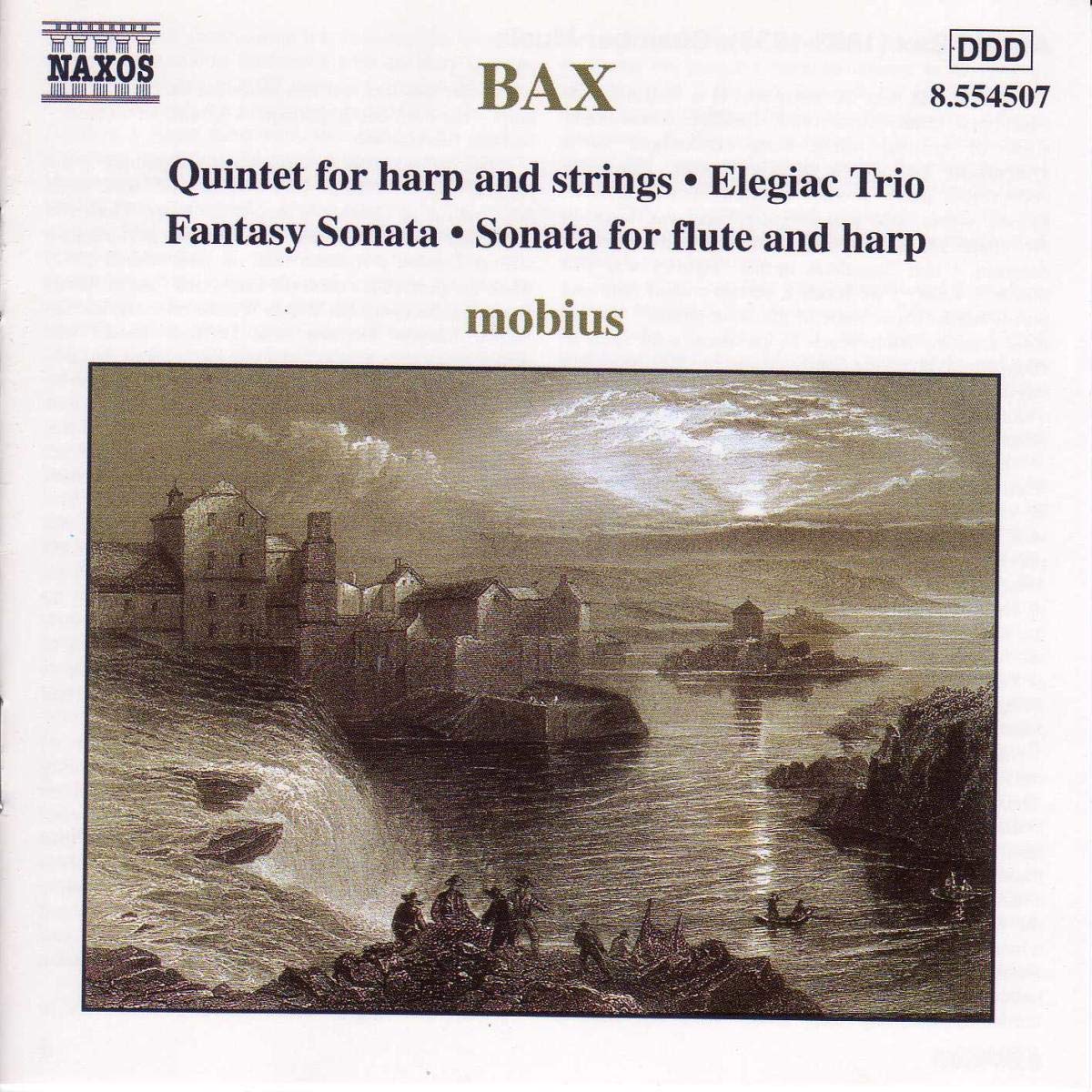
kompozytor
Bax, Arnold
tytuł
BAX: Chamber Music
wykonawcy
Mobius
nr katalogowy
8.554507
opis
The Harp Quintet which was written in 1919, probably at much the same time that he made his first visit to Ireland after the War. Again in a single movement, the sound of the harp is important in creating the music's character and impact. Here again the overall mood is sorrowful. However, the boldly, even dramatically, lyrical opening by the string quartet (the harp only accompanying and adding occasional touches of colour) sets the mood, but with the arrival of the sustained second subject the harp is now boldly accompanying. Bax seems to be telling au unwritten story, with spectral interludes and a dramatic faster episode with dissonant string accompaniment. Inevitably none of them last; the harpist muses again and again on some private grief. Towards the end Bax writes sonorously for the strings, the bold harp accompaniment suggesting some bardic recounting of legends of long ago. Eventually the music fades in a long-drawn twilight evocation. •
In the mid-1920s a new musical influence entered Bax's life, when another harpist, Maria Korchinska, became active on the London concert platform, encouraging him to write more virtuosically for the instrument. The first musical outcome of this was Bax's four movement Fantasy Sonata, which is dated April 1927 and was first performed at a concert of his chamber music at the Grotrian Hall on 10th June that year. Bax takes the harp and viola and treats them as the perfect romantic medium, writing for the two with great resource, always alert for an original instrumental timbre. Although the music plays continuously (with a brief break between the third and fourth movements) this is, unusually for Bax, in four movements.
nośnik
CD
gatunek
Muzyka klasyczna
producent
Naxos
data wydania
11-07-2000
EAN / kod kreskowy
636943450727

(Produkt nie został jeszcze oceniony)
cena 58,00 zł
lubProdukt dostepny w niewielkiej ilości.
Wysyłka w ciągu 3 dni roboczych
Darmowa wysyłka dla zamówień powyżej 300 zł!
Darmowy kurier dla zamówień powyżej 500 zł!
sprawdź koszty wysyłki































